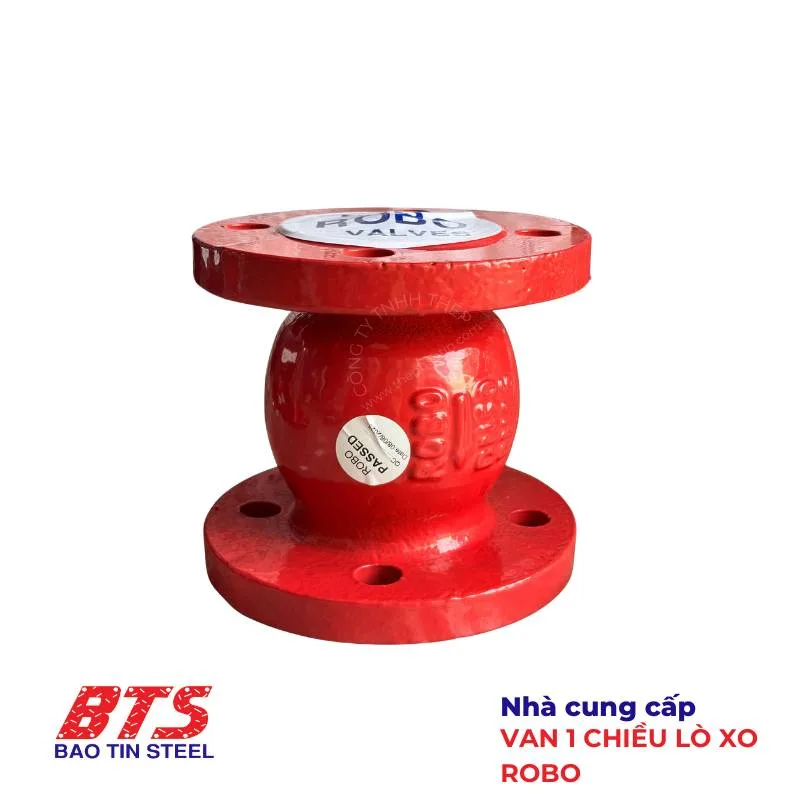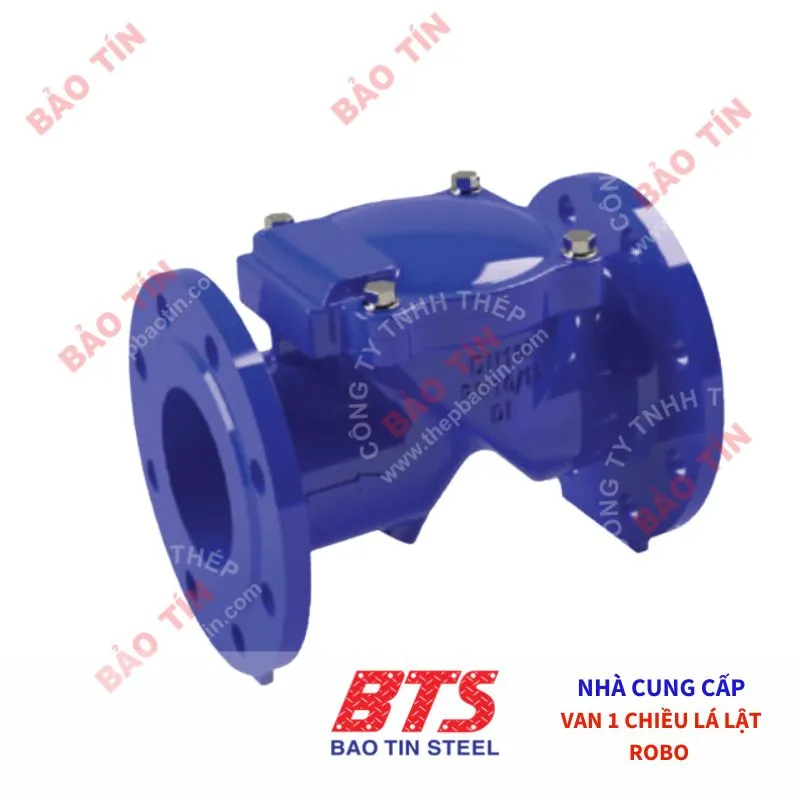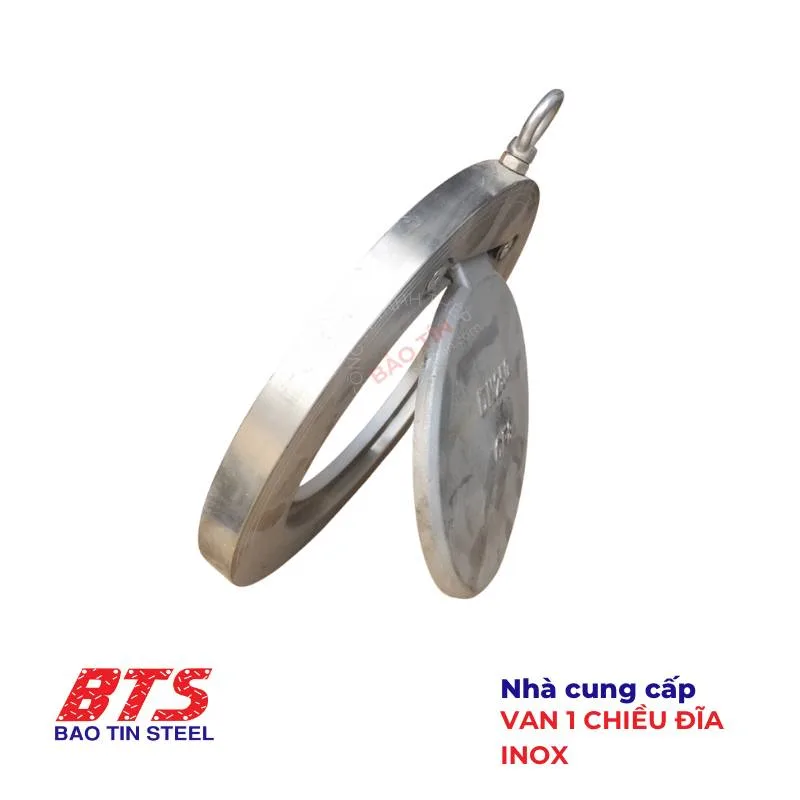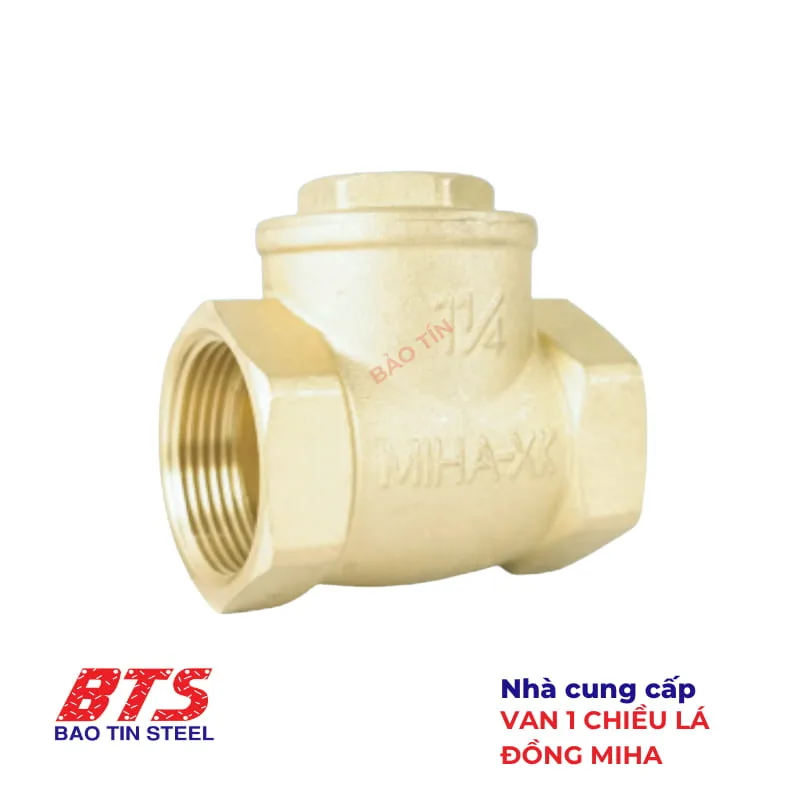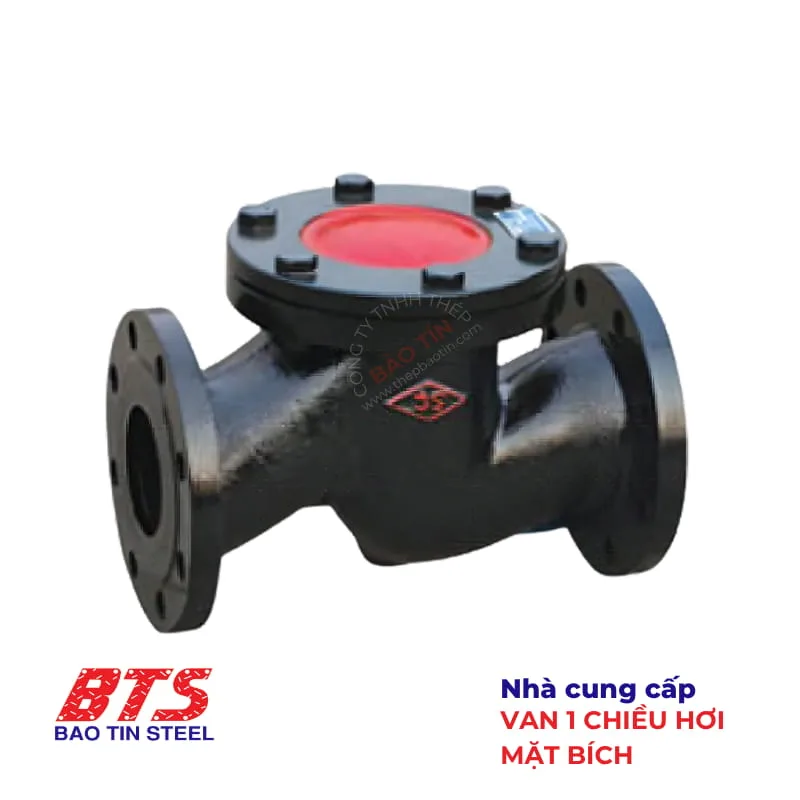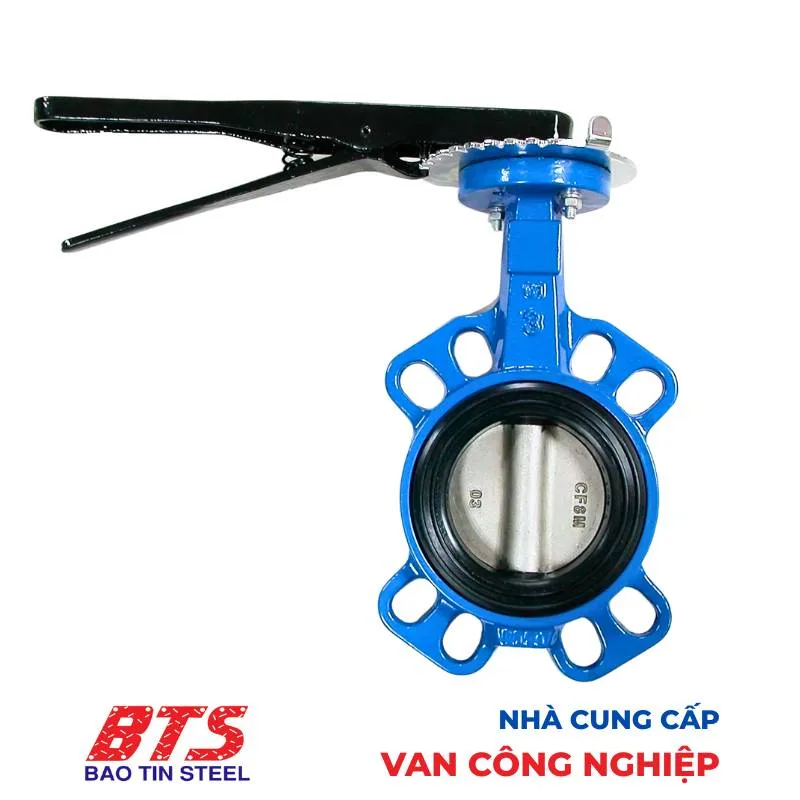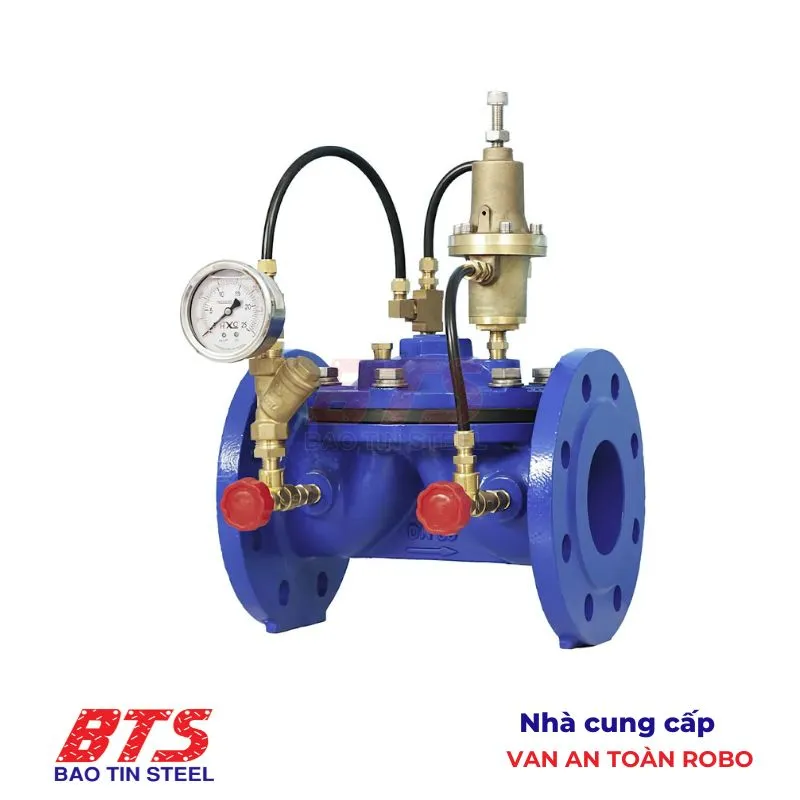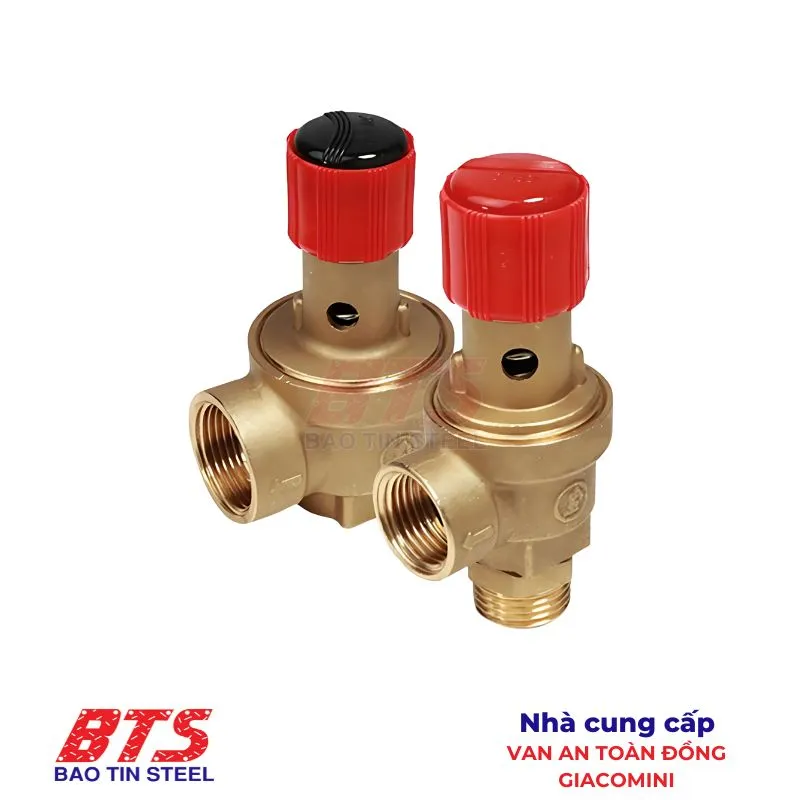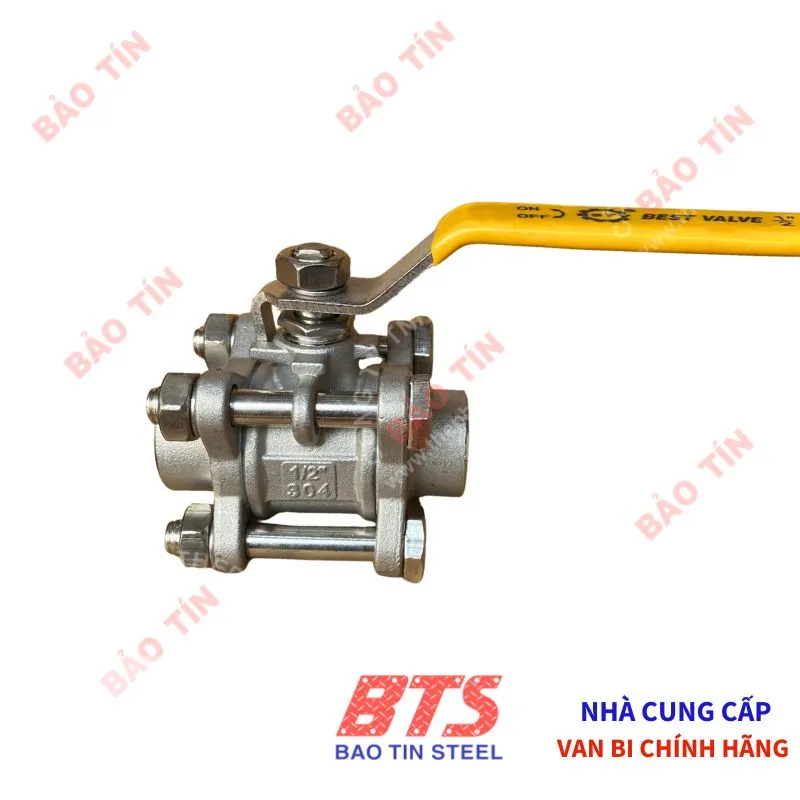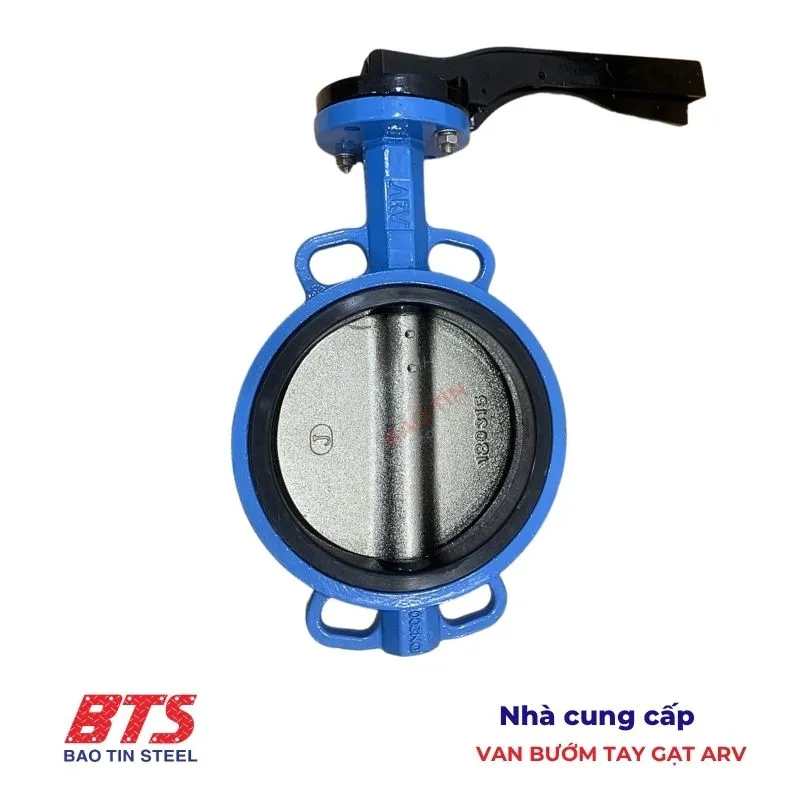When designing or operating a piping system, selecting the correct type of valve is crucial for ensuring performance, safety, and equipment longevity. Among the popular industrial valves today, the check valve and 2-way check valve are commonly used, but can often be confusing if the specific features and functions of each type are not fully understood. So, what is the difference between these two types of valves? When should you choose a check valve? In which cases is a 2-way check valve the optimal choice?
In this article, Bao Tin Steel will compare the check valve and 2-way check valves in detail and in a simple manner to help you make the best decision for your system – whether it’s for residential water supply or heavy industrial applications. Let’s get started!
What is a check Valve?
A check valve, also known as a check valve or reverse flow valve, is an industrial valve designed with one main function: to allow fluids (water, air, gas, etc.) to flow in only one direction while completely preventing reverse flow. This type of valve is commonly found in pump systems, water pipelines, fire protection systems (FPC), and air compressors.

The operation of a check valve is completely automatic, requiring no manual or electrical/pneumatic control. The valve opens when the inlet pressure is sufficient to overcome the closing force of the valve (or spring force, if present), and it automatically closes when the flow stops or when reverse pressure occurs.
Depending on the application, check valves come in various designs such as: swing check valve, spring check valve, ball check valve, butterfly check valve, and disc check valve. Each type has unique features suited to different environments and working conditions.
Key Advantages of a 1-Way Valve Include:
- Effectively prevents reverse flow, protecting pumps and downstream equipment.
- No manual control required, saving power and operational costs.
- Simple design, easy to install and maintain.
However, check valves also have some limitations, such as: they cannot regulate flow, and there is a risk of water hammer if the wrong type is selected or if installation is done incorrectly.
Check out some check Valve models at Bao Tin Steel.
What is a 2-Way Check Valve?
A 2-way check valve is an industrial valve that allows fluids to flow in both directions, meaning the flow can enter and exit in two different directions depending on operational requirements. Unlike a check valve that only allows flow in one fixed direction, a 2-way check valve enables active control of the fluid flow, allowing it to be opened, closed, or regulated according to the specific needs of the system.

In practice, “2-way check valve” is a classification based on functionality, not a specific type of valve. Common types of valves that can operate in both directions include:
These valves are operated manually (with a lever or handwheel) or automatically via electric or pneumatic controllers, depending on the intended use and the level of automation in the system.
The main advantages of a 2-way check valve are:
- Flexible flow control: allows for opening/closing or regulating the flow of liquids, gases, or steam.
- Compatible with various types of fluids and high-pressure environments.
- Widely used in industrial, residential, and automated systems.
However, due to its more complex construction, a 2-way valve is generally more expensive. It requires more meticulous maintenance compared to a check valve, especially in corrosive environments or under high-pressure conditions.
Check out some 2-Way check Valve models at Bao in Steel.
The ROBO Safety Valve (Safe Valve) offers a wide range of sizes, from DN50 to DN300, ensuring your system operates smoothly while providing safety and long-lasting durability.
Check Valves vs. 2-Way Valves: A Quick Comparison

To help you easily distinguish and make the right choice, here is a comparison table of the key criteria between check valves and 2-Way check Valves:
| Criteria | 1-Way ValveCheck Valve | 2-Way Valve |
|---|---|---|
| Operating Principle | Opens/closes automatically based on pressure difference. | Controlled opening/closing or flow regulation manually or automatically. |
| Flow Direction | Allows flow in only one direction. | Allows flow in two directions (may have a preferred direction depending on type). |
| Flow Regulation Capability | Cannot regulate flow; only fully opens or closes. | Can fully open/close or regulate flow (depending on valve type). |
| Construction | Simple design, fewer parts, no external control mechanism. | More complex construction typically includes a valve stem, a hand lever/handwheel, and electric or pneumatic controllers. |
| Operation | Fully automatic, no manual control required. | Manual or automatic operation can integrate with central control systems. |
| Key Advantages | 100% automationLow cost to install and maintainEffectively prevents reverse flow. | Active flow control, precise flow regulation application from residential to industrial. |
| Drawbacks | Cannot regulate flowCan cause water hammer if incorrectly installedProne to jamming if large debris is present. | Higher cost regular maintenance types require correct flow direction installation. |
| Common Applications | Pumps, fire protection systems (FPC), HVAC, air compressors, water treatment, water heaters… | Industrial plants, HVAC systems, water supply and drainage, steam, chemicals, automation systems… |
| Cost | Generally cheaper due to a simple design. | Generally, more expensive due to integrated control mechanisms and higher flexibility. |
When to Choose a Check Valve vs. a 2-Way Valve
The choice depends on system needs, flow characteristics, and operational requirements. Here’s a quick guide:
Choose a Check Valve when:
- You need to prevent reverse flow to protect equipment (e.g., pumps, flow meters).
- No manual or automatic control is needed; flow opens/closes based on pressure.
- You prioritise simplicity, low maintenance, and cost efficiency.
- The system runs continuously without reversing flow direction.
- It’s used in water supply, fire protection, HVAC systems, or both residential and industrial pumps.
Example: In a water pumping system, installing a check valve at the outlet helps prevent reverse flow that could damage the pump.
Choose a 2-Way Valve when:
- You need to actively control the flow: opening, closing, or regulating as needed.
- The system may require reversing the flow direction or needs to operate flexibly in both directions.
- You need to integrate the valve into an automated system (which may include adding electric or pneumatic controllers).
- It is used in industrial plants, water treatment systems, chemicals, steam systems, etc.
- You are willing to invest more for precise flow control and regulation.
Example: In a central air conditioning system, a 2-way valve is used to regulate the flow of chilled water through the coil system, helping to optimise temperature control.
Conclusion
Through the detailed analysis above, it is clear that both 1-way and 2-way valves play important roles but serve completely different needs:
- Check Valve is suitable for preventing reverse flow, operating automatically, saving costs, and being simple to install.
- 2-Way check Valve is the ideal choice when active flow control is needed, allowing flexible opening/closing and regulation based on operational situations.
Therefore, understanding the intended use, system characteristics, and investment budget is key to choosing the right type of valve, avoiding waste, and enhancing operational efficiency.
If you are looking for a reliable supplier of industrial valves, Bao Tin Steel is a trusted choice.
We offer a full range of check valves and 2-way check valves, including:
- Check valves, spring valves, ball valves, butterfly valves, gate valves, globe valves
- Materials: Cast iron, brass, stainless steel, steel, plastic
- Various connection types: Threaded, flanged, wafer, etc.
Commitments from Bao Tin Steel :
- Genuine products with full CO-CQ certificates
- In-depth technical consulting support
- Fast delivery, competitive pricing, and attractive project discounts
- A team with many years of experience in steel pipe and industrial valve equipment
Contact us now via Hotline: 0932 059 176
Email: kinhdoanh@thepbaotin.com.


 Tiếng Việt
Tiếng Việt ភាសាខ្មែរ
ភាសាខ្មែរ